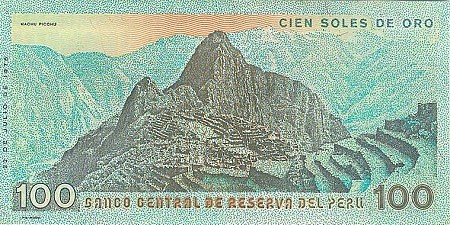PERU
Túpac Amaru II

The Peruvian hero Tupac Amaru II was born in Cusco, Peru in 1742 under the name Jose Gabriel Condorcanqui. He was the grandson of Tupac Amaru, the last leader of the Incas in Peru, who was beheaded by the Spanish Viceroy under unverified claims of rebellion and murder. As a young man Jose Condorcanqui received his education through a Spanish run Jesuit school in the area. In 1760 he was married to Micaela Bastidas Puyycahua.
He inherited the position of Chieftain of Tungasuca and Papamarca from his brother, but Jose Condorcanqui’s rule was suzerain under the Spanish governor. Condorcanqui held obvious sympathies for the indigenous peoples of his land, and he tried to convince the Spanish government to improve employment and living conditions for the working classes.
His efforts to convince the Spanish government to treat the native peoples better were unsuccessful, and in 1780 Condorcanqui decided to invoke the power historical favor and adopted a more traditional costume and took his great grandfather’s name of Tupac Amaru.
Now known as Tupac Amaru II, he formed a rebellion against the local Spanish government. In what became known as the Sierra Uprising, they kidnapped the Spanish Governor Antonio de Arriago, dressed him in the cowl of a Franciscan friar and hanged him at the plaza in the city of Tungasuca.
Only nine days later a large success was made by Tupac Amaru II in the Battle of Sangarara, where over 300 Spaniards were killed compared to only 30 Peruvians. Though the victories propelled Tupac Amaru II as a leader in the indigenous people’s eyes, the Spanish fought a propaganda war against him and Tupac Amaru II lost favor amongst the local Creole and Mestizo population.
Tupac Amaru II was captured in March of 1781 and he was cruelly sentenced. He was made to view the execution of his wife, oldest son, uncle and brother in law. Then he was tortured and died after being drawn and quartered in the plaza where is great grandfather Tupac Amaru I was beheaded.
Though Tupac Amaru II was not successful in his efforts against the Spanish in his lifetime, his efforts were well remembered and likened to those of the Incan ancestors, and he has been elevated to a legendary hero status. The memory of his martyrdom helped many other groups to rise up against the Spanish throughout the Americas. Even today other revolutionary groups in Latin America have adopted the Tupac Amaru brand for their purposes in opposing oppressive regimes. The American Rap Artist Tupac Amaru Shakur was named after him, partly in fear of retaliation of his mother’s ties to the Black Panther Party, hoping a name change would bring protection, and partly for the hope and promise that the name has denoted these many years. Sadly, the Rap artist, like the revolutionary, died after a brief reprieve from poverty. The rapper is today thought as a hero among his fans, as Tupac Amaru II is thought of to this day. Without heroes such as this to pave the way, the world would be a vastly different place.

